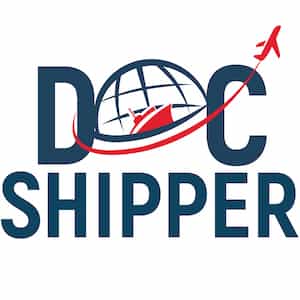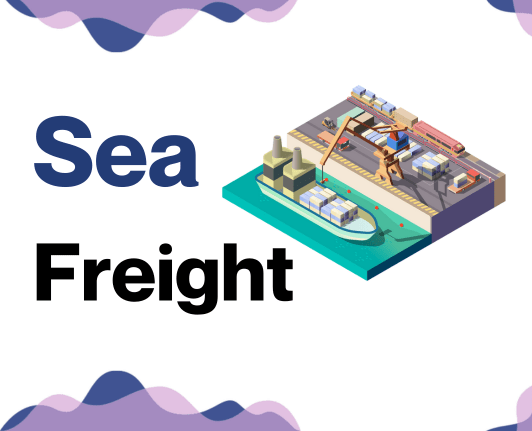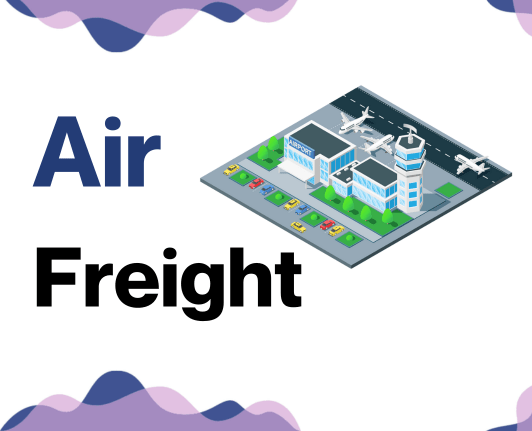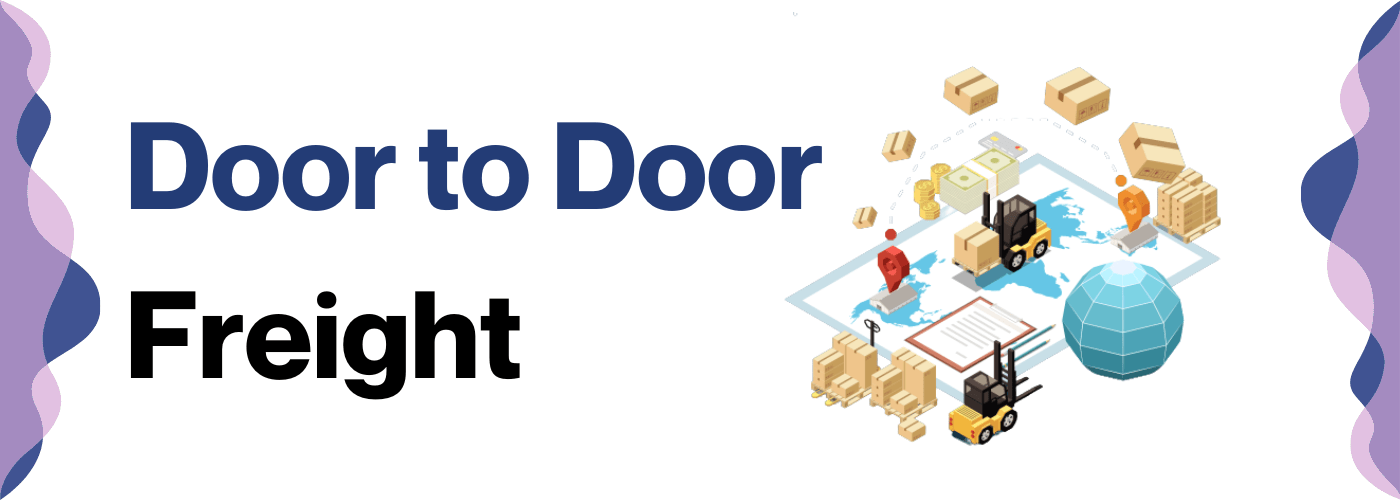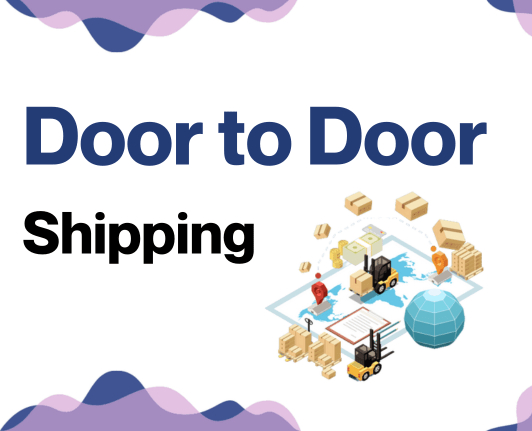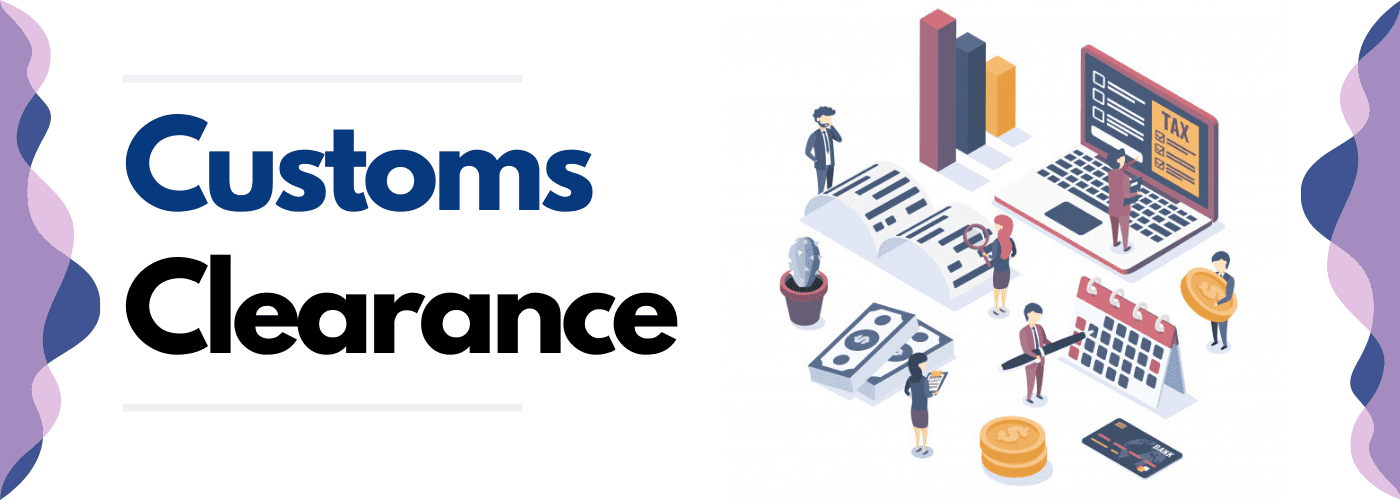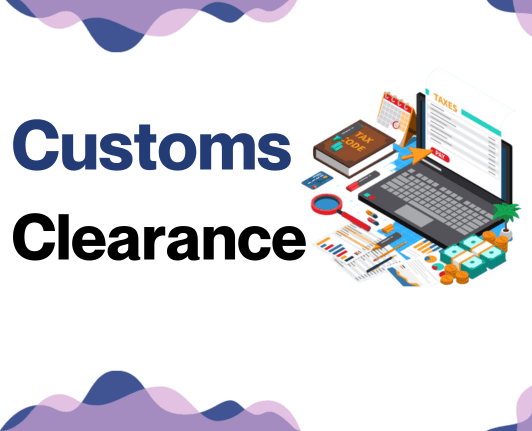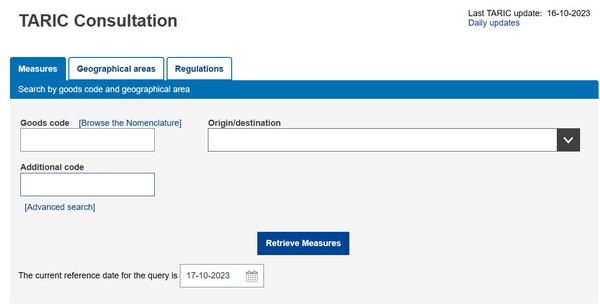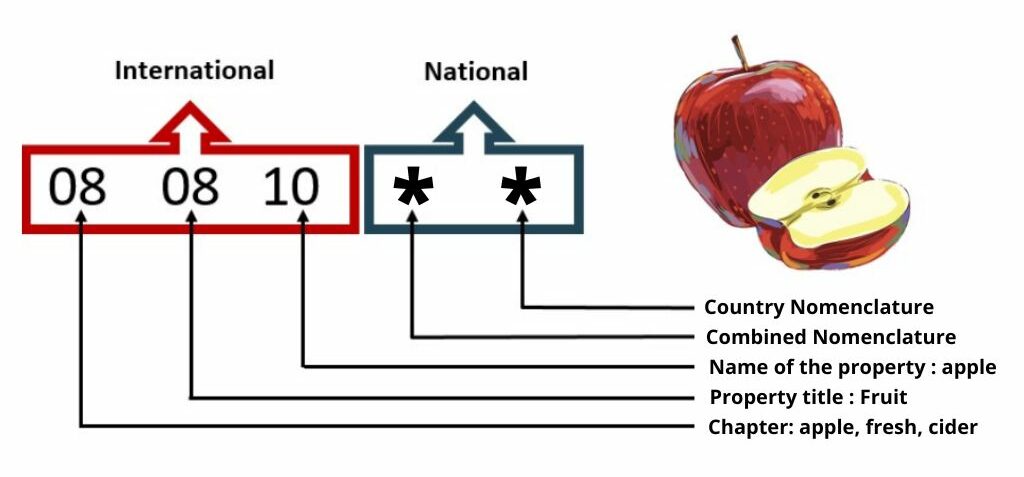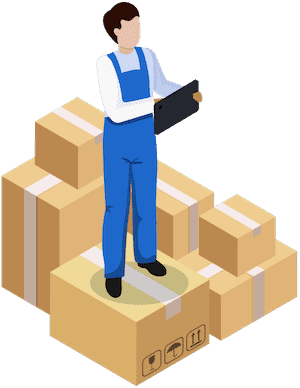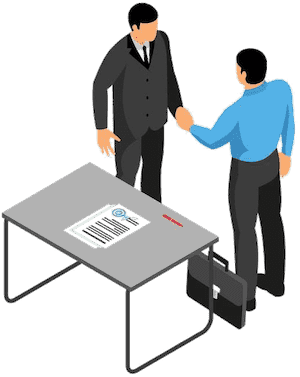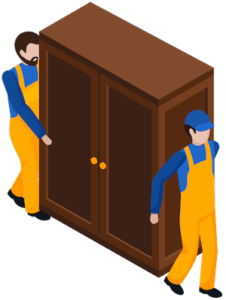Why did the freight container go to school? Because it wanted to get a little 'class'! Jokes aside, we understand that wrestling with transit times, freight rates, and puzzling customs regulations from Malaysia to Germany can be an intimidating experience.
Welcome to our comprehensive guide, designed to demystify the complexities of shipping between these countries. We will explore everything from air, sea, road, to rail freight options, decrypt customs clearance procedures and help you grasp duties and taxes you may encounter.
Throughout, our advice stays tailored for businesses keen on understanding the practical aspects, ensuring you can make informed decisions. If the process still feels overwhelming, let DocShipper handle it for you! As an experienced international freight forwarder, we pave the path smoother by managing every step, turning potential challenges into triumphant success stories for your business.
Table of Contents
Which are the different modes of transportation between Malaysia and Germany?
Transportation between countries feels like choosing the right highway for a road trip—specific needs determine one's course. The main routes from Malaysia to Germany are long, with oceans and continents in the way, which rules out road and rail.
The geography leaves air or ocean freight as likely candidates. Choosing the best option between them is like picking the fast sports car or the large family van—will you prioritize speed or capacity? As we delve deeper, businesses must consider cost, volume, and urgency to align their mode of transportation with their unique needs.
How can DocShipper help?
Looking to ship goods between Malaysia and Germany? Trust DocShipper to streamline your process. Our expertise spans across customs, admin work, and choosing the optimal transport method. Why get tangled in logistics? Let us handle it. Contact us today for a free estimate within 24 hours or ring up our consultants for help anytime.
DocShipper Tip: Sea freight might be the best solution for you if:
- You're dealing with hefty quantities or oversized goods. Sea transport is your go-to for maximizing space without stretching your budget.
- Time sensitivity isn't a concern for your shipment. Ocean freight is known for its leisurely pace, especially when compared to the speed of air or rail.
- Your supply chain connects key international harbors. This positions you to take full advantage of a wide-reaching network of ocean trade routes.
Sea freight between Malaysia and Germany
Situated over 10,000 kilometers apart, Malaysia and Germany have formed a robust trade relationship, thanks largely to the enduring efficiency of ocean shipping.
Key industrial centers in both countries are interconnected through bustling cargo ports, such as Port Klang in Malaysia and the Port of Hamburg in Germany. For businesses dealing in high-volume goods, sea freight emerges as the most cost-effective solution - a trade-off for its slower speed.
Yet, sea freight between these two nations isn't without its challenges. Shippers often struggle to navigate complicated shipping processes, making costly blunders along the way. But take heart - there are best practices and specifications designed to make the journey smoother, which we'll demystify in this guide.
Consider it your own nautical chart for the capricious seas of international shipping - minus the pirate threats, of course. Hang tight, we're about to delve deep into all things related to ocean shipping between Malaysia and Germany.
Main shipping ports in Malaysia
Port Klang
Location and Volume: Located strategically in the Selangor region, Port Klang is the primary port of Malaysia, handling more than 11.3 million TEUs annually.
Key Trading Partners and Strategic Importance: Crucial trading partners for Port Klang include China, Singapore, and India. It serves as the country's main gateway to the maritime Silk Road.
Context for Businesses: If you're planning to extend your market presence to these countries, Port Klang's high shipping volume and efficient import/export procedures can add a competitive edge to your logistics strategy.
Port of Tanjung Pelepas
Location and Volume: The Port of Tanjung Pelepas is in the Johor region, south of Malaysia, which is in close proximity to the major East-West shipping lanes. It handles an annual shipping volume of approximately 8 million TEUs.
Key Trading Partners and Strategic Importance: This port has a global reach, with Singapore, Hong Kong, and China being significant trading partners. Its world-class facilities and strategic location have accelerated its growth into a global container hub.
Context for Businesses: Primed to serve major international shipping lanes, Port of Tanjung Pelepas could be a solid gateway for businesses exploring opportunities in Southeast Asia and beyond.
Port of Penang
Location and Volume: Located on the northwest coast of Peninsular Malaysia, the Port of Penang handles around 1.7 million TEUs annually.
Key Trading Partners and Strategic Importance: Main trading partners include India, China, Hong Kong, and neighboring ASEAN countries. This port provides a wide range of port and marine services, playing a vital role in the northern region of Peninsular Malaysia.
Context for Businesses: With direct access to the Bay of Bengal, Andaman Sea, and Straits of Malacca, the Port of Penang might be an option to consider if your business is keen on creating connections with these markets.
Port of Johor
Location and Volume: Situated at the southern tip of Peninsular Malaysia, the Port of Johor has an annual throughput close to 1 million TEUs.
Key Trading Partners and Strategic Importance: Main trading partners include Indonesia, Vietnam, and Thailand. It serves as a regional hub for edible oils, and is vital for palm oil exports.
Context for Businesses: Being a key player in the palm oil industry, the Port of Johor would suit businesses involved in this sector or those intending to cultivate relations with Southeast Asian markets.
Port of Kuantan
Location and Volume: Located on the east coast of Peninsular Malaysia, the Port of Kuantan handles over 500,000 TEUs annually.
Key Trading Partners and Strategic Importance: Major trading partners include China and the Southeast Asian nations. It is the largest port on the east coast, predominantly serving industrial complexes in the region.
Context for Businesses: If your operations are focused on the eastern region of Peninsular Malaysia or if your business has ties with China and Southeast Asian countries, Port of Kuantan could be your option.
Port of Bintulu
Location and Volume: The Port of Bintulu is in Sarawak, East Malaysia, and handles around 200,000 TEUs per year.
Key Trading Partners and Strategic Importance: It is a major hub for commodity exports, especially liquified national gas. Main trading partners are countries in the far East, Europe, and North America.
Context for Businesses: If you're an exporter of natural gas or commodities, the Port of Bintulu could be your pivotal transit point with a global reach. It's also suitable if your business operates in or targets the Borneo region.
Main shipping ports in Germany
Port of Hamburg
Location and Volume: The Port of Hamburg is situated on the Elbe River, heart of Germany and is the busiest port in the country. It handles around 9.3 million Twenty-foot Equivalent Units TEUs annually, making it one of the top 20 largest ports worldwide.
Key Trading Partners and Strategic Importance: Its trading partners include China, Russia, Poland, and Scandinavian countries. Due to its inland location, it serves as a crucial transport hub for not only sea, but also rail and road logistics.
Context for Businesses: If you're seeking to tap into the robust European market, using the Port of Hamburg would be beneficial due to its impressive infrastructure and seamless connection to mainland Europe.
Port of Bremerhaven
Location and Volume: Located on the mouth of the River Weser, the Port of Bremerhaven is the second biggest port in Germany. It handles approximately 5.1 million TEUs each year.
Key Trading Partners and Strategic Importance: The port holds a strategic position due to its significant handling of transatlantic car transportation and container shipping. Principal trading partners include countries such as the USA, UK, France, and China.
Context for Businesses: For businesses involved in the automobile industry, the Port of Bremerhaven is the best choice considering its specialization in vehicle logistics.
Port of Wilhelmshaven
Location and Volume: The Port of Wilhelmshaven, located on the Jade Bight, is known as Germany's only deep-water port, handling up to 2.7 million TEUs.
Key Trading Partners and Strategic Importance: The port has important trade relationships with Asia, especially China, and plays a crucial role across the container, crude oil and chemicals sectors.
Context for Businesses: If your logistics demands involve shipping large volumes of goods, especially to and from Asia, the Port of Wilhelmshaven is well-equipped with its deepwater capabilities.
Rostock Port
Location and Volume: Situated at Warnow River, Rostock Port is the largest seaport of Germany in the Baltic Sea, handling over 25 million tonnes of cargo annually.
Key Trading Partners and Strategic Importance: It maintains crucial trade links with Nordic and Baltic neighboring countries, Russia, and others owing to its strategic location.
Context for Businesses: For companies looking to conduct trade with Nordic and Baltic countries, Rostock Port offers a strategic advantage due to its proximity to these markets.
Lübecker Hafen
Location and Volume: The Lübeck Port, on the Trave River, is Northern Germany's biggest Baltic port, handling close to 1.5 million TEUs annually.
Key Trading Partners and Strategic Importance: This port is strategically linked through trade with countries from the Baltic region, resembling a gateway to the Baltic Sea.
Context for Businesses: Lübeck Port would be the ideal shipping location if your enterprise is focusing on expanding trade in the Baltic region.
Kiel Harbour
Location and Volume: Kiel Harbour, located at the head of Kieler Förde, is a significant passenger port, handling approximately 1.3 million passengers each year, besides being a cargo shipping hub.
Key Trading Partners and Strategic Importance: The port primarily connects the Baltic Sea, the North Sea and inland waterways, majorly with Russia and Scandinavia.
Context for Businesses: If you're contemplating broadening your business towards the passenger transport segment, especially towards Scandinavia and the Baltic Sea, Kiel Harbour could be a vital part of your logistics process.
Should I choose FCL or LCL when shipping between Malaysia and Germany?
Choosing between Full Container Load (FCL) and Less than Container Load (LCL), also known as consolidation, for your seafaring journey from Malaysia to Germany presents strategic decisions that can shape the success of your shipping process.
This decision can significantly impact your cost, delivery time, and overall efficiency. But worry not, we're here to decipher the logistics jargon and help you make this critical choice tailored to your specific needs.
Let's plunge into the nitty-gritty of these sea freight options and empower you to make an informed, cost-effective decision that aligns with your business goals.
LCL: Less than Container Load
Definition: LCL (Less than Container Load) freight shipping allows multiple shippers to consolidate their cargos into one container.
When to Use: LCL is an optimal choice for businesses shipping less than 15 cubic meters (CBM) of goods. Its flexibility and affordable pricing suit smaller freight volumes well, making it a go-to choice between Malaysia and Germany.
Example: Consider a small electronics firm in Kuala Lumpur that needs to ship 10 CBM of components to Germany. Using an LCL shipment, the company can pay only for their portion of the container, saving on costs compared to booking a full container.
Cost Implications: Despite handling and consolidation fees at both origin and destination ports, LCL freight tends to be more cost-effective for lower volume shipments. However, as your freight volume approaches the full container load, you might find FCL becoming more competitive in terms of cost. Remember, every LCL freight quote is unique, depending on factors such as the exact freight volume and the current market conditions.
FCL: Full Container Load
Definition: FCL, or Full Container Load, is a type of ocean freight where a shipper has exclusive use of a container, commonly a 20'ft or 40'ft container. It’s termed ‘FCL’ due to the container being fully utilized.
When to Use: This shipping solution is often cheaper and safer for high-volume shipments. FCL is typically preferred when the cargo volume exceeds 13-15 CBM as it's more cost-effective; also, when security is a concern - the container is sealed from origin to destination avoiding frequent handling.
Example: For instance, a furniture manufacturer in Malaysia shipping a large order to a retailer in Germany would likely select FCL shipping. It would be more practical to secure a FCL container where all goods can be loaded, thus reducing the potential for damage and cost per unit.
Cost Implications: In an FCL shipping quote, costs are generally flat, making them more predictable. The cost difference between a 20'ft and 40'ft container is not double, making it cheaper per cubic meter as volume increases. In addition, there might be fewer customs issues, hence, potentially fewer unforeseen charges. Though, charges for loading and delivery might increase proportionally to the distance between the warehouse and the port.
Unlock hassle-free shipping
Choosing between consolidation and a full container can be a tough task. But relax, DocShipper, your trusted freight forwarder, has got you covered. Our ocean freight experts are committed to simplifying your cargo shipping experience. With a keen understanding of factors like shipment size, timing, and budget, they'll help you make the best choice. Ready to simplify your ocean shipping between Malaysia and Germany? Let's start with a free estimation! Make shipping hassle-free with DocShipper.
How long does sea freight take between Malaysia and Germany?
Sea freight between Malaysia and Germany typically takes around 26-27days. However, these transit times can vary due to various factors, ranging from the specific ports used to the weight and classification of your goods. Because shipping needs differ across businesses, we strongly recommend reaching out to a proficient freight forwarder, such as DocShipper, to get a customized quote suited to your specific situation.
Here's a snapshot of the average transit times across the main freight ports:
| Malaysian Ports | German Ports | Average Transit Time (Days) |
| Port Klang | Port of Hamburg | 27 |
| Port of Tanjung Pelepas | Port of Bremerhaven | 27 |
| Penang Port | Port of Rostock | 26 |
| Johor Port | Port of Wilhelmshaven | 26 |
*Please note that these times are based on general approximations. For accurate timelines, reach out to us for a tailored quote.
How much does it cost to ship a container between Malaysia and Germany?
Crunching numbers on ocean freight rates between Malaysia and Germany can be a complex task. The shipping cost per cubic meter (CBM) can greatly vary, impacted by factors such as Point of Loading, Destination, carrier choice, nature of goods, and market fluctuations. But don't let this complexity daunt you. Our skilled shipping specialists are here to help.
They'll navigate these variables and provide tailored quotes, ensuring you receive the best possible rates for your shipments. Remember, every shipping case is unique. We're with you, every step of the way, on your international journey.
Special transportation services
Out of Gauge (OOG) Container
Definition: An OOG container is a special type of shipping module designed to handle oversized or oddly shaped commodities that can't fit inside a standard unit.
Suitable for: Large or irregularly shaped items that exceed the dimensions of a normal cargo container.
Examples: Large machinery, heavy equipment, industrial components, or construction materials.
Why it might be the best choice for you: If you're dealing with out of gauge cargo such as heavy machinery or construction materials. An OOG container can ensure safe and efficient transport, providing flexibility that standard containers cannot offer.
Break Bulk
Definition: Break bulk refers to goods that must be loaded individually onto the ship, rather than in containers. The cargo is often on pallets, in crates, or in sacks.
Suitable for: Loose items that are not containerized and can be handled separately.
Examples: Steel girders, timber, bagged cement, or barrels of oil.
Why it might be the best choice for you: If you're dealing with goods that don't fit well into containers or require individual handling, such as steel girders or bagged cement, break bulk might be the most suitable method.
Dry Bulk
Definition: Dry bulk refers to the transportation of unpackaged goods in large quantities. These commodities are usually poured into the ship's hold.
Suitable for: Free-flowing goods and raw materials.
Examples: Grains, coal, ores, or sand.
Why it might be the best choice for you: If your goods are free-flowing and can be easily poured like grain or sand, Dry bulk is a wise choice due to its efficient loading/unloading process and cost-efficiency, especially for high volume goods.
Roll-on/Roll-off (Ro-Ro)
Definition: Ro-ro vessels are ships designed for carrying vehicles that can drive on and off the ship on their own or using a platform vehicle, such as a truck or trailer.
Suitable for: Wheeled cargo like cars, buses, and trucks.
Examples: Automobiles, tractors, trailers, and even rolling railway stock.
Why it might be the best choice for you: If you're transporting vehicles or cargo on wheels from Malaysia to Germany, then Ro-ro is a fast and secure method. The ease of simply driving your vehicles onto the ship and off again simplifies the logistics process.
Reefer Containers
Definition: Reefer containers, or refrigerated containers, are temperature-controlled units used to ship goods that need a certain climate.
Suitable for: Perishable goods requiring a controlled temperature.
Examples: Foods like fruits and vegetables, dairy products, meat, seafood, or pharmaceuticals.
Why it might be the best choice for you: Should your cargo need strict temperature control to maintain its quality, such as perishable food or pharmaceuticals, a reefer container would be an optimal choice, keeping your goods at the desired temperature throughout the voyage.
If you're shipping goods between Malaysia and Germany and need a precise and tailor-made shipping plan, the team at DocShipper can help. Don't hesitate! Reach out to us for a free shipping quote within less than 24 hours.
DocShipper Tip: Air freight might be the best solution for you if:
- You're pressed for time or facing a non-negotiable deadline. Air freight delivers unparalleled speed when it comes to transit times.
- Your shipment is modest in size, falling under 2 CBM. Air freight is particularly well-suited for these smaller consignments.
- Your supply chain includes destinations that are off the beaten maritime or rail paths. Air freight gives you access to a comprehensive global airport network.
Air freight between Malaysia and Germany
Air freight between Malaysia and Germany is your speedy and reliable partner in international trade, making express deliveries for small yet high-value shipments.
Imagine having Malaysia's finest electronic components or Germany's premium car parts at your fingertips in just a span of a few days. It's like having a virtual conveyor belt zipping across continents!
But here's the rub – making a beeline for air freight isn't always plain sailing, with pricey pitfalls lurking around the corner. It's like trying to solve a puzzle where you forgot to check all the pieces first. Missteps like miscalculating the weight of your goods, not using the right formula, can leave you overshooting your budget - akin to ordering a gourmet meal without checking the price tag.
Diving into our guide can help you steer clear of these common blunders, equipping you with best practices to get your goods airborne without breaking the bank.
Air Cargo vs Express Air Freight: How should I ship?
Looking to send a shipment from Malaysia to Germany and torn between Air Cargo and Express Air Freight? Let's clarify your options. Air Cargo is like hitching a ride for your goods on a regular airline flight. Express Air Freight, on the other hand, is your goods enjoying the VIP treatment, flying alone on a dedicated plane. Let's make a well-informed decision and find the best fit for your specific business needs.
Should I choose Air Cargo between Malaysia and Germany?
Air cargo from Malaysia to Germany might align with your needs. Carriers like Malaysia Airlines Kargo and Lufthansa Cargo handle substantial traffic, lending credence to their reliability. Both airlines have fixed schedules, making transit times more predictable, albeit longer. If your freight exceeds 100/150 kg (220/330 lbs), air cargo becomes especially attractive. Opting for this method strikes a balance between cost-effectiveness and assured delivery.
Should I choose Express Air Freight between Malaysia and Germany?
Express air freight, operated by dedicated cargo planes without passengers, is ideal for your smaller, time-sensitive shipments from Malaysia to Germany. Weighing under 1 CBM or 100/150 kg (220/330 lbs), these shipments can quickly reach their destination through well-established courier firms like FedEx, UPS, or DHL. These firms offer reliable, swift, and global reach. So, if you're looking for speed and efficiency, express air freight should be your go-to option, ensuring your shipments arrive rapidly and safely.
Main international airports in Malaysia
Kuala Lumpur International Airport (KLIA)
Cargo Volume: KLIA handled 726,230 metric tons of cargo in 2019.
Key Trading Partners: Main trade partners include China, the USA, Japan, Singapore, and India.
Strategic Importance: As one of the busiest airports in Southeast Asia, KLIA connector to the Free Trade Zone, making it integral to your supply chain.
Notable Features: The cargo complex, also known as Advanced Cargo Centre (ACC), can handle one million tonnes of cargo annually.
For Your Business: With its high capacity and strategic partners, KLIA could serve as an essential hub for expanding your business in Asia.
Penang International Airport (PIA)
Cargo Volume: PIA handled over 172,800 metric tons of cargo in 2019.
Key Trading Partners: Primarily Singapore, China, Indonesia, Thailand, and Hong Kong.
Strategic Importance: Located in Malaysia's northern region, PIA allows easy access to Asia's manufacturing powerhouses.
Notable Features: Equipped with all modern facilities, the airport also offers cargo express services.
For Your Business: Its location combined with express cargo can expedite the transport of your high-priority goods to northern Asia.
Johor Bahru Senai International Airport (LTAS)
Cargo Volume: LTAS moved around 8,000 metric tonnes of air freight in 2018.
Key Trading Partners: The main trading partners include South Korea, Japan, and Australia.
Strategic Importance: Membership in the Southern Corridor Malaysia makes this airport important in regional development.
Notable Features: The airport is known for its freighter friendly environment supported by fully integrated logistics hub.
For Your Business: LTAS can be an ideal solution to reach South East Asian and Oceanian markets given its network and logistics support.
Sultan Abdul Aziz Shah Airport (Subang Airport)
Cargo Volume: The cargo and mail traffic for 2019 stood at slightly over 26,862 metric tonnes.
Key Trading Partners: Being located in Kuala Lumpur, similar key trading partners as KLIA.
Strategic Importance: Known for manufacturing and technological industries, it is ideal for high-value cargo.
Notable Features: The airport has a dedicated Subang Cargo Centre, providing a diverse range of cargo handling services.
For Your Business: Proximity to manufacturing zones and cargo-specific services makes Subang Airport a reliable point of departure for valuable exports.
KuantanPort Consortium Sdn Bhd (Kuantan Port)
Cargo Volume: Kuantan Port handled 27.5 million freight weight tonnes in 2020.
Key Trading Partners: Main trading partners include China, Singapore, Indonesia, and Vietnam.
Strategic Importance: The port, under the East Coast Economic Region (ECER), plays a vital role in the development of regional industries.
Notable Features: Deepwater terminal and advanced harbor facilities make it capable of handling large-capacity panamax vessels.
For Your Business: Its capabilities make it a choice for raw material import/export within manufacturing industries, specifically if you're dealing with bulk cargo.
Main international airports in Germany
Leipzig/Halle Airport:
Cargo Volume: As Germany's second-largest airport by cargo traffic, it handles over 2.38 million tons annually.
Key Trading Partners: Significant trade partners include China, Russia, the Americas and other European countries, particularly in the e-commerce sector.
Strategic Importance: Strategically located in the heart of Europe, it serves as DHL’s main European hub and a major center for cargo airlines.
Notable Features: Runs 24/7 making it ideal for time-sensitive shipments. It also boasts diversified cargo facilities like temperature-controlled storage for sensitive freight.
For Your Business: The wide-ranging connections and tailored operational hours may be beneficial for your e-commerce or perishable goods ventures.
Frankfurt Airport:
Cargo Volume: Its annual cargo volume surpasses 2.1 million tons, making it Germany’s largest air freight hub.
Key Trading Partners: Notable trading partners are the US, China, and South America, primarily in the pharmaceuticals and automotive industries.
Strategic Importance: It's a key gateway for global trade and the main hub for Lufthansa Cargo.
Notable Features: Provides the largest capacities for airfreight in Europe and has specialized logistics for pharmaceuticals and dangerous goods.
For Your Business: If your trade involves high-value or specialized goods, Frankfurt's advanced capabilities make it a compelling choice.
Cologne Bonn Airport:
Cargo Volume: Handles over 800,000 tons of cargo annually, ranking it among Germany's top 3.
Key Trading Partners: Significant partners are Asia and other European countries with a focus on e-commerce.
Strategic Importance: Acts as a major hub for UPS and FedEx, two large courier express service companies.
Notable Features: Offers 24/7 operation and benefits from advanced cargo handling systems ideal for express shipments.
For Your Business: With its strong focus on courier and express services, it might suit your urgent, express, or e-commerce shipment needs.
Munich Airport:
Cargo Volume: Presents a smaller but effective operation with around 380,000 tons of cargo annually.
Key Trading Partners: Key partners include the USA, China, and Dubai, concentrating on high-tech and automotive.
Strategic Importance: Serves as a secondary hub for Lufthansa and DHL.
Notable Features: Hosts state-of-the-art facilities including a Pharma Hub catering to temperature-sensitive goods.
For Your Business: This can be a suitable alternative if your business exports high-tech, automotive, or pharmaceutical goods.
Hahn Airport:
Cargo Volume: Moves about 80,000 tons of cargo yearly.
Key Trading Partners: Major players include China and other Asian destinations, principally in general cargo and e-commerce.
Strategic Importance: Though smaller, it's crucial for budget airlines and as a secondary hub for major cargo airlines.
Notable Features: Provides a modern Cargo Center and stands out for its low-cost airline operations.
For Your Business: If cost-effectiveness is a priority, Hahn Airport's low-cost operations and general cargo focus could serve your needs effectively.
How long does air freight take between Malaysia and Germany?
Shipping your goods from Malaysia to Germany via air freight typically takes around 3 to 5 days. However, it's important to note that transit times can vary significantly. Factors such as the specific airports involved, the weight of the shipment, and the type of goods being shipped all have a role to play. So, for accurate estimates tailored to your individual shipping needs, it's always wise to consult an expert freight forwarder such as DocShipper.
How much does it cost to ship a parcel between Malaysia and Germany with air freight?
Air freight shipping rates between Malaysia and Germany can vary greatly, typically averaging around $3 - $10 per kilogram. However, it's challenging to offer a precise figure as costs depend on a myriad of factors, including distance to and from airports, parcel dimensions, weight, and nature of goods. Rest assured, our team is committed to helping you navigate these variables to secure the best potential rate. Remember, our quotes are meticulously customized on a case-by-case basis. Don't hesitate to reach out - you'll receive a free quote from us in less than 24 hours!
What is the difference between volumetric and gross weight?
Gross weight refers to the actual weight of a shipment, including its packaging. It's how heavy something is when you lift it. Volumetric weight, on the other hand, is a measure often used in air cargo that considers the space the item occupies in relation to its actual weight.
To calculate the gross weight in air cargo, you simply sum up the weight of the items and packaging in kilograms (kg).
For example, let's say your shipment weighs 50kg. To convert from kilograms to pounds (lbs), multiply by 2.205. So, 50kg is about 110.23lbs.
Meanwhile, finding the volumetric weight involves slightly more steps. It's calculated by multiplying the length, width, and height (in cm) of your shipment, and dividing the result by 5000. For instance, if your package measures 40cm x 50cm x 60cm, you'll get 120,000cm³. Dividing 120,000cm³ by 5000, you get 24kg as the volumetric weight. Translating into lbs, this translates to approximately 52.91lbs.
Freight charges in air shipments are determined based on the higher result between gross and volumetric weight. This is important as it ensures a fair pricing model, considering not only an item's weight but also the space it occupies in an aircraft. Therefore, understanding these calculations allows businesses to optimally pack their cargo, possibly reducing their shipping costs.
DocShipper tip: Door to Door might be the best solution for you if:
- You value convenience and want a seamless shipping process, as door-to-door takes care of every step from pickup to delivery.
- You prefer a single point of contact, as door-to-door services typically provide a dedicated agent to handle all aspects of the shipment.
- You want to minimize the handling of your goods, reducing the risk of damage or loss, as door-to-door minimizes transitions between different modes of transport.
Door to door between Malaysia and Germany
Meet international door-to-door shipping: your one-stop freight solution between Malaysia and Germany. This mode delivers goods straight from the supplier to the recipient, reducing stress and enhancing efficiency. Why fumble with multiple transfers when you can do it all in one go? Sounds interesting, right? Don't worry; we've got plenty to cover. So without further ado, let's dive in.
Overview – Door to Door
Door-to-Door shipping from Malaysia to Germany strips the complexities from your logistics equation. It's a holistic solution that conveniently covers all aspects of moving goods - from initial pick-up to final delivery. Businesses love it due to the minimized hustle, single-point of contact, and the reduced chances of miscommunication. But, accosting duties and custom clearance hassles can still occur. At DocShipper, our clients often declare it the most stress-free choice. Get ready to address the shipment challenges and turn them into triumphs with our adept door-to-door service. Remember, every convenience comes with trade-offs; it's all about finding the balance. You’re not alone in this journey - we're here to help every step of the way!
Why should I use a Door to Door service between Malaysia and Germany?
Ever felt like shipping goods was a high-wire act without a safety net? Good news! Door to Door service between Malaysia and Germany offers a safety cushion and more! Let's explore the five reasons why this service could be your logistics lifesaver.
1. Stress-free Logistics: You don't have to be a 'juggler' anymore, handling multiple aspects of the shipping procedure. The Door to Door service personally picks up the goods from your location and delivers them right to their destination. It's too easy!
2. Timely Delivery: Urgent shipment? Relax! With its efficient network and control systems, this service virtually outruns time and ensures that your goods are delivered promptly.
3. Specialized Care for Complex Cargo: Have a bulky or fragile package that needs extra TLC? With Door to Door, you get specialized care to securely transport your most complex cargo, ensuring it arrives undamaged.
4. Greater Convenience: Take it easy, like a Sunday morning. This service streamlines the freight procedures and handles the trucking until the delivery. No need for you to sweat the details, just sit back and relax.
5. Final Destination Delivery: Avoid the headaches of customs and bureaucracy. Door-to-door service ensures that your goods clear customs and reach their final destination, hassle-free. So you avoid playing an unwelcome game of Snake and Ladders with your shipment.
So, if you're looking for a shipping service that feels like a comfy logistics hammock, why not choose Door to Door?
DocShipper – Door to Door specialist between Malaysia and Germany
Experience seamless door-to-door shipping between Malaysia and Germany with DocShipper. Our proficiency ensures a stress-free process as we manage every detail from packing to customs clearance.
Regardless of your shipping method, we’ve got it covered. To top it off, enjoy the services of a dedicated Account Executive to ensure a smooth journey for your goods. That's worry-free logistics, delivered. Touch base with us for a no-obligation quote within 24 hours, or chat directly with our knowledgeable consultants at no cost. We're all about moving your business forward.
Customs clearance in Germany for goods imported from Malaysia
Customs clearance is a pivotal process that allows goods to enter a country. When importing from Malaysia to Germany, intricacies of this procedure often lead to unforeseen fees. Understanding customs duties, taxes, quotas, and licenses is crucial, a misunderstanding may result in your cargo being held in customs. However, obstacles are not insurmountable. Our upcoming sections will unravel these complexities. DocShipper is primed to assist throughout, enabling smooth goods transfer worldwide. To budget your project, contact our team with your goods' origin, value, and HS Code, which are vital to proceed further. With us, your shipment journey becomes simpler.
How to calculate duties & taxes when importing from Malaysia to Germany?
When you're aiming to import products from Malaysia to Germany, the first thing to know is that understanding the process of estimating duties and taxes is essential. To correctly calculate these costs, it's critical to gather specific details such as the country where the goods originated, the HS (Harmonized System) Code that classifies your product, the customs value which includes the cost of goods, insurance and freight (CIF), the tariff rate that Germany will apply, and any additional taxes or fees that may be specific to the products you're moving.
The voyage to accurate estimation begins by clearly identifying the country where the goods were originally manufactured or produced. This involves checking where each part of your shipment was created and collated, as this could significantly affect which tariffs are applied and thereby impact the final cost.
Step 1 - Identify the Country of Origin
Knowing your product's Country of Origin, in this case Malaysia, sets the stage for smooth import operations to Germany. Here are five reasons why it's critical before securing your HS code:
- Trade Relations: Understanding the established trade agreements between Malaysia and Germany affords potential financial gains and smoother transactions, thanks to reduced or eliminated customs duties.
- Commodity Regulations: Malaysia might have specific import restrictions. Knowing these aids in compliant and penalty-free trade.
- Export Controls: Malaysia, as the country of origin, may impose export regulations on particular goods. Familiarity with these prevents unexpected shipping delays.
- Duty Drawback: Rules of origin factor into whether you qualify for duty drawback, a potential substantial savings.
- Industry-Specific Standards: Certain goods have industry-specific labeling, packing, or testing standards. Your items need to adhere to these to avoid denials or penalties.
Examining trade agreements, you come across the EU-ASEAN Cooperation Agreement. Granted, it doesn’t entirely eliminate tariffs but provides preferential treatment, slowly phasing out duties on numerous goods.
Respect import restrictions. For example, Germany bans certain animal products from Malaysia due to health considerations.
Strike a balance: Enjoy the privileges of trade agreements while ensuring compliance with both Malaysia's export controls and Germany's import restrictions. Remember, the goal isn’t just delivering; it’s delivering without hiccups.
Step 2 - Find the HS Code of your product
The Harmonized System Code, often abbreviated to HS Code, is a globally standardized system of names and numbers to classify traded products. Developed by the World Customs Organization (WCO), it aids in the harmonization of customs and trade procedures, thereby significantly reducing the costs associated with international trade.
The most straightforward way to obtain the HS code for your product is to consult your supplier. Being extensively familiar with their products and the regulations surrounding their importation, they can easily provide you with this information.
If this is not feasible, don't worry. We've designed an easy, step-by-step process to enable you in your search. Navigate to the Harmonized Tariff Schedule to take advantage of their HS lookup tool. Simply input the name of your product into the search bar, and take a look at the Heading/Subheading column. This is where your product's HS code will be displayed.
A word of caution though: accuracy is of utmost importance when determining the HS code for your product. An incorrect code may have significant consequences, such as importation delays and even financial penalties.
Step 3 - Calculate the Customs Value
Understanding the customs value of your shipment is not an uphill battle and it's crucial for accurate duty calculation!
Don't confuse this with the products' price, it's different. The customs value is actually determined based on the CIF (Cost, Insurance, and Freight) value. For instance, if your products cost $10,000, international shipping costs $1,000, and the insurance cost is $500, the CIF value is $11,500. So, the customs clearance process in Germany will calculate based on this value, not merely on the price of your goods. It might seem a little complicated, but this is one puzzle piece you can't afford to misinterpret when importing goods from Malaysia. Adopt this formula for your own operation - your pocketbook will thank you!
Step 4 - Figure out the applicable Import Tariff
An import tariff, often simply referred to as a tariff, is a tax imposed on goods imported from a different country. In Germany, which is part of the European Union, the Common Customs Tariff (CCT) applies to goods imported from outside the EU. To determine the specific tariff that applies to your product, you can use the TARIC System - European Customs tool.
Here's how to use this tool:
1. Insert the Harmonized System (HS) code for your product and specify Malaysia as the country of origin.
2. Review the displayed results to discover the duties and taxes applied to your product from Malaysia.
To illustrate, let's say you're importing wristwatches under the HS code 9102.91 from Malaysia. After entering this information in the TARIC tool, you might find, for example, a tariff rate of 4.5%. If your declared value for the watches, including the cost, insurance, and freight (CIF), is $50,000, you'd calculate your import duty as follows: 0.045 (tariff rate) x 50,000 (CIF value) = $2,250. This means you would pay a $2,250 import duty to German customs. Always remember, though, tariff rates can change, so it's crucial to use the TARIC tool for the most accurate information.
Step 5 - Consider other Import Duties and Taxes
Understanding potential import duties and taxes can save you from unexpected costs down the line. Besides the standard tariff rate, you might be accountable for other fees depending on your product and its origin. For instance, if you're shipping alcohol or tobacco from Malaysia to Germany, an excise duty may apply.
Then there's also the anti-dumping taxes. Consider this hypothetical scenario: If there's an influx of cheap Malaysian rubber into Germany, causing substantial harm to the domestic industry, Germany might impose anti-dumping duties.
Lastly, pay close attention to the Value Added Tax (VAT). Importing goods into Germany subjects them to a standard VAT rate of 19%. To calculate this, use this formula: custom value + cost of transport + import duties = taxable amount x VAT rate.
Remember, these are examples - the precise rates will depend on your unique shipment. Staying informed and proactive will help evade painful financial surprises. Affordable shipping isn't only about finding the cheapest freight - it's also about understanding all the extra levies that could come your way.
Step 6 - Calculate the Customs Duties
In calculating custom duties on your goods imported from Malaysia to Germany, several variables come into play: Customs Value, Value Added Tax (VAT), Anti-dumping Taxes, and Excise Duty.
Essentially, your customs duty is calculated based on the Customs Value of your goods - that's the cost of your item plus freight and insurance costs.
Let's consider three examples:
1. An electronic device valued at $500 with 10% customs duty rate, but no VAT: here you only need to consider customs duty. Therefore, you'd owe $50 (10% of 500).
2. A vehicle valued at $10,000 subject to a customs duty rate of 10% and a VAT rate of 20%. In this case, you pay $1,000 for the customs duty, then calculate VAT of $2,200 on the total amount ($10,000 value plus $1,000 customs duty). The total duty = $3,200.
3. A premium watch valued at $20,000 with a 15% customs duty, a 20% VAT, a 10% anti-dumping tax, and 5% excise duty. You'll calculate each charge sequentially and add them up on the cumulative total, resulting in a total duty = $10,750.
Key takeaway: the process is exacting and details matter. This is where DocShipper can expertly assist. We provide end-to-end customs clearance services globally, ensuring a hassle-free process and preventing excessive charges. Reach out any time - a free quote is always less than 24-hours away.
Does DocShipper charge customs fees?
As a custom broker, DocShipper only charges fees for customs clearance services in both Malaysia and Germany, not customs duties. These duties and taxes are entirely government levies. Dealing with this can be challenging, akin to sorting out layers of shipping labels! So, to instill transparency, we'll hand you the original documents from customs to confirm that your payment matches the exact amount imposed by the customs office.
Contact Details for Customs Authorities
Malaysia Customs
Official Name: Royal Malaysian Customs Department
Official Website: www.customs.gov.my
Germany Customs
Official name: Generalzolldirektion (General Customs Directorate)
Official website: www.zoll.de
Required documents for customs clearance
Solving the puzzle of customs clearance? Decode the doc-drama with this breakdown on the Bill of Lading, Packing List, Certificate of Origin, and Documents of Conformity (CE standard). Eliminate confusion, meet regulations, and keep your cargo moving smoothly across borders. Welcome to a hassle-free shipping journey.
Bill of Lading
Navigating the ocean of international freight requires mastery of key documents – the Bill of Lading tops the list. Consider it your ownership certificate when shipping goods from Malaysia to Germany. It's more than a receipt; it's the legal compass guiding your cargo from Kuala Lumpur port to Hamburg, ensuring a smooth transaction.
Lost in a sea of paperwork? An electronic, or 'telex' release, offers a lifeline. This digital savior speeds up the process, reducing uncertainties and slashing wait times. And if you favor the skies for freight, don't forget the AWB – your airway counterpart of the Bill of Lading. Employ these tools correctly to sail smoothly through customs and deliver your goods in record time.
Packing List
Preparing a Packing List for your shipment from Malaysia to Germany is no minor task—it's your key to smooth customs clearance. Whether you're shipping electronics by air or furniture by sea, your Packing List should accurately detail what's inside your cargo.
Imagine unloading a container in Hamburg, only for customs officials to find unlisted items. Delays, additional costs, and even fines could follow. You’d be responsible for that as the shipper. Precision when listing the contents, quantity, and description helps beat such snags.
Consider it your freight's ID—it affirms the authenticity and integrity of your shipment, a prerequisite for both sea and air freight. Ace your Packing List, and you're already sailing (or flying) towards a hassle-free shipping experience.
Commercial Invoice
Shipping goods from Malaysia to Germany? You'll need a well-prepared Commercial Invoice. Key details include the seller and buyer information, description of goods, HS codes, country of origin, and value of commodities. Why is this crucial? Your Commercial Invoice plays a driving role in customs clearance. Clarity and accuracy are paramount, as misalignment could lead to delays and hefty fines.
Here's a tip: Ensure this invoice aligns perfectly with your packing list and other shipping documents. Double-check details and consider adopting technologies that streamline the process, reducing manual errors. Remember, a well-orchestrated Commercial Invoice is your passport to a smooth shipping journey.
Certificate of Origin
Navigating customs clearance for shipments between Malaysia and Germany? Make sure the Certificate of Origin (CO) tops your document checklist. Not just any certificate, but a properly filled one stating the country of manufacture - and here's why.
The CO can unlock preferential customs duty rates, potentially saving your business a significant sum. Think of an agricultural exporter in Penang shipping high-quality locally sourced rice to Berlin. Ensuring Malaysia is listed as the country of origin, the exporter could benefit from duty reductions under the EU-Malaysia Trade Agreement. But remember, a tiny typo could cause a big delay. You'd be wise to double-check your paperwork before bidding your goods bon voyage. Every detail matters when your bottom line is on the line.
Certificate of Conformity (CE standard)
When shipping goods from Malaysia to Germany, handling the Certificate of Conformity (CE standard) is key, a North Star amid an ocean of regulations. Think of it as a passport for your products, granting them access into the European market, including Germany.
Unlike a simple quality assurance mark, the CE logo endorses your goods, affirming they meet health, safety, and environmental standards that Europe holds dear. And although it may lack a direct parallel to US standards, the CE mark shares similarities with the American FCC and FDA regulations.
So remember, ensuring your goods carry this seal secures smoother customs clearance and higher market acceptance. It's your ticket to business expansion, bridging the trading path from Kuala Lumpur to Berlin.
Your EORI number (Economic Operator Registration Identification)
Going through customs between Malaysia and Germany? Securing an EORI (Economic Operator Registration Identification) Number should be at the top of your checklist.
It's more than just a number - it's a unique identifier that helps track your imports and exports within the EU, simplifying the customs process. Think of it like your company's passport to the EU.
To obtain one, you'll need to apply with European customs authorities - but it's worth the investment. Without it, your goods might get tangled up in red tape, leading to delays that could make a dent in your profit margins. So, it's time to get your EORI number and start shipping smarter!
Get Started with DocShipper
After navigating the maze of customs clearance for shipping between Malaysia and Germany, you may feel overwhelmed. Don't let import duties and regulations slow your business down. Trust DocShipper to handle everything for a smooth, stress-free experience. Ready to lighten your load? Contact us for a hassle-free quote delivered to your inbox within 24 hours. Transform your shipping experience now.
Prohibited and Restricted items when importing into Germany
Cracking the code of Germany's import regulations? Guess what, it's not just about customs rates and paperwork. Be savvy with what you ship – some items might be blocked or restricted. Let's dive into the list of these skinners, ensuring your freight rolls smoothly into Germany.
Restricted Products
- Animals and Plants: You have to obtain a CITES (Convention on International Trade in Endangered Species) permit for any endangered species or derivative products. You can apply for this permit through the Federal Office for Nature Conservation.
- Pharmaceuticals and Medicines: A special import license from the Federal Institute for Drugs and Medical Devices (BfArM) is required if you're planning to ship pharmaceuticals into Germany.
- Firearms and ammunition: To ship firearms and related items, you must apply for a firearms import license from the Federal Criminal Police Office (BKA).
- Alcohol and Tobacco: For alcohol and tobacco products, an excise duty must be paid, as stipulated by the Federal Ministry of Finance.
- Radioactive Substances: The import of radioactive substances requires approval from the Federal Office for Radiation Protection.
- Pesticides, Herbicides, and Other Agrochemicals: You need to get a special permit from the Federal Office of Consumer Protection and Food Safety to import these.
Remember each product category may have more specific rules and regulations, so it is always a good idea to double-check the requirements with the relevant authority. Also, regulations can change, so stay updated with the most current laws.
Prohibited products
- Narcotic drugs (except for specific medicinal purposes)
- Explosive materials, fireworks, and certain types of ammunition
- Pornographic materials and publications that are harmful to minors
- Publications, audio, or visual media likely to incite violence, hatred, or racial discrimination
- Certain types of plants and seeds due to potential disease or pests
- Endangered animals, plants, and their derivatives that are protected under the Washington Convention
- Counterfeit goods and unauthorized copies of intellectual property
- Radioactive substances
- Chemical weapons, biological weapons, and weapons of mass destruction
- Unauthorized medicines and substances posing potential health risks.
Are there any trade agreements between Malaysia and Germany
Yes, your business stands to gain from the partnership between Malaysia and Germany under the European Union-Malaysia Partnership Cooperation Agreement (PCA).
This accord fosters economic and trade cooperation, creating an enticing climate for shipping operations between the two nations. Infrastructure projects, such as the East Coast Rail Link in Malaysia set to boost connectivity, signal further opportunities. Stay tuned for updates as these countries strengthen their ties.
Malaysia - Germany trade and economic relationship
Strategically located within ASEAN, Malaysia's robust business environment and Germany's technological advancements have fostered mutually beneficial economic ties for over six decades.
The bilateral trade between the two nations peaked at about €14.5 billion in 2019. Germany is the largest exporter to Malaysia within the EU, with key sectors like electronics, automotive, and manufacturing witnessing remarkable growth in investments.
Conversely, palm oil, rubber, and electrical components top the chart of Malaysia's exports to Germany. Germany, ranking as Malaysia's 6th largest global investor, brought in approximately €400 million Foreign Direct Investment in 2019 alone. Furthermore, over 400 German enterprises operate within Malaysia, underscoring the vital role this trade relationship plays in both respective economies. This partnership continues to thrive, bolstering growth prospects for businesses considering international shipping between the two countries.
Your Next Step with DocShipper
Experience hassle-free shipping between Malaysia and Germany with DocShipper! As experts in customs regulations and various modes of transport, we make your first-time trade journey seamless. Let us take on the complexities, from managing logistics routes to ensuring secure clearance. Explore peace of mind in your shipping process. Contact us today to embark on your international shipping adventure!
Additional logistics services
Discover how DocShipper's comprehensive logistics solutions go beyond shipping and customs. We streamline your supply chain end-to-end, providing seamless, efficient, and worry-free operations. Experience unparalleled convenience with our additional services.
Warehousing and storage
Finding that perfect warehouse in Malaysia for your temperature-sensitive cargo shipped to Germany is like finding a needle in a haystack. Stressful, right? A well-maintained, climate-controlled warehouse can be a game-changer for your perishable items. No more spoiled stock, only happy customers! Dive deeper into how we can solve your warehousing headache.
Packaging and repackaging
Securing your goods for transit from Malaysia to Germany isn't just strategic, it's crucial. By opting for packaging and repackaging services, you can ensure your shipments, from electronics to machinery, reach their destination intact, no matter the journey. Trust in a reliable partner who knows how to cater to the specific regulations of these countries. Don’t let poor packaging stand in the way of your success.
Cargo insurance
Just as you safeguard your property with fire insurance, imagine covering your Malaysia-Germany cargo against transport mishaps. Unlike fire insurance, Cargo Insurance embraces various risk scenarios - from storm damage at sea to road accidents. Consider a shipment of fragile electronics; a sudden ship tilt could result in lost profits. By choosing Cargo Insurance, you’re choosing prevention and assurance.
Supplier Management (Sourcing)
Finding a supplier overseas can feel like finding a needle in a haystack. Luckily, DocShipper is your expert guide, finding suppliers in regions like Asia and East Europe and managing the entire procurement process. No more language barrier hassles or process confusion. Think of us as your trusty partner in the vastness of international procurement. Want specifics? Check out our Sourcing services to see how we operate.
Personal effects shipping
Moving from Malaysia to Germany with hefty or delicate items? Don't fret. Our Personal Effects Shipping service guarantees your precious belongings - be it Grandma's antique vase or your bulky home gym set - reach their destination in Germany in top shape. Count on our diligent handling and flexible service for a hassle-free move.
Quality Control
Quality control is your safeguard against faulty batches being sent from Malaysia to Germany. You don't want your shipment rejected upon arrival, right? Let’s picture this: shipment of 10,000 custom-designed watches, worth thousands, sent back due to poor assembly. Onsite quality inspections ensure the volumes you pay for are good to set sail! Avoid expensive returns and maintain your reputation with our QC service.
Product compliance services
Make sure your goods have no hiccups in transit with our Product Compliance Services. Regulations can be tricky, but with our laboratory tests for certification, you can be confident about your product's compliance at its destination. For example, when shipping an electronic gadget, this service ensures it meets all safety standards. No regulatory surprises, just smooth delivery.
FAQ | Freight Shipping between Malaysia and Germany | Rates - Transit times - Duties and Taxes
What is the necessary paperwork during shipping between Malaysia and Germany?
Absolutely, when shipping goods from Malaysia to Germany, it's crucial to have your paperwork in order. We at DocShipper take care of essential documents like the bill of lading for sea freight or air waybill for air freight. What you need to provide is a packing list and a commercial invoice. Depending on the nature of the goods, additional documents like Material Safety Data Sheet (MSDS) or certifications may be necessary. We are here to simplify the process for you and ensure a smooth shipping experience.
Do I need a customs broker while importing in Germany?
While it is not a requirement, employing a customs broker for your imports arriving in Germany is highly advised. The reason for this is the detailed knowledge and expertise needed to negotiate the complexity associated with the customs clearance process. Tasks like dealing with mandatory documentation, adhering to strict procedural guidelines, and interfacing with the customs authorities are where we at DocShipper step in. We take this burden off your shoulders, representing your cargo to the customs officials in most shipments, ensuring a hassle-free experience for you.
Can air freight be cheaper than sea freight between Malaysia and Germany?
It largely depends on a variety of factors, such as route, weight, and volume. Generally, if your cargo is less than 1.5 cubic meters or weighs less than 300 kg (660 lbs), air freight becomes a viable option to consider. However, it's essential to note that every shipment is unique, and these are not hard and fast rules. At DocShipper, we commit to providing you the most competitive option. Our dedicated account executives will carefully analyze each situation and advise on the most cost and time-efficient mode of transport, tailored specifically to your needs. We ensure your goods are delivered safely and economically, whether by air or sea.
Do I need to pay insurance while importing my goods to Germany?
While no law makes it mandatory to secure insurance for your shipments, we at DocShipper highly advise you to opt for it. In the world of global shipping, there are several unforeseen situations that could potentially result in the damage, loss, or even theft of your goods. Therefore, for the safety of your imports to Germany, having insurance will act as a financial safeguard against such incidents. It's a small step that could save you from significant financial fallout in case of any mishaps.
What is the cheapest way to ship to Germany from Malaysia?
We recommend sea freight as the most cost-effective transport method from Malaysia to Germany. Despite a longer transit time compared to air freight, sea freight's lower costs are ideal for businesses prioritizing budget. Container sharing, known as Less than Container Load (LCL), can further cut costs if your cargo doesn't fill an entire container. However, timing is crucial in freight shipping. Make sure to plan your shipment effectively to align with your business needs.
EXW, FOB, or CIF?
The best trade term for you indeed depends on your relationship with your supplier. Keep in mind suppliers aren't usually logistics professionals, so it would be beneficial to let a logistics expert like us at DocShipper assist with the international freight process and handling procedures at the destination. Typically, suppliers sell under EXW (Ex Works), which means goods are collected from their factory, or FOB (Free on Board), including all local charges till the product reaches the origin terminal. Regardless of these terms, we provide a complete door-to-door service, taking care of all facets of the shipping process, ensuring your goods reach their destination safely and on time.
Goods have arrived at my port in Germany, how do I get them delivered to the final destination?
When shipping with us under CIF/CFR incoterms, you'll need to engage a custom broker or freight forwarder to manage customs clearance, pay import charges, and finalize delivery. Alternatively, you can contract us for DAP incoterms. We'll handle everything right to your doorstep. Ensure to verify these details with your dedicated account executive for clarity.
Does your quotation include all cost?
Our quotes encompass all costs, barring duties and taxes at the destination. You can always turn to your dedicated account executive for an estimate of duties and taxes. At DocShipper, we prioritize transparency, ensuring there are no hidden fees to catch you off guard.
